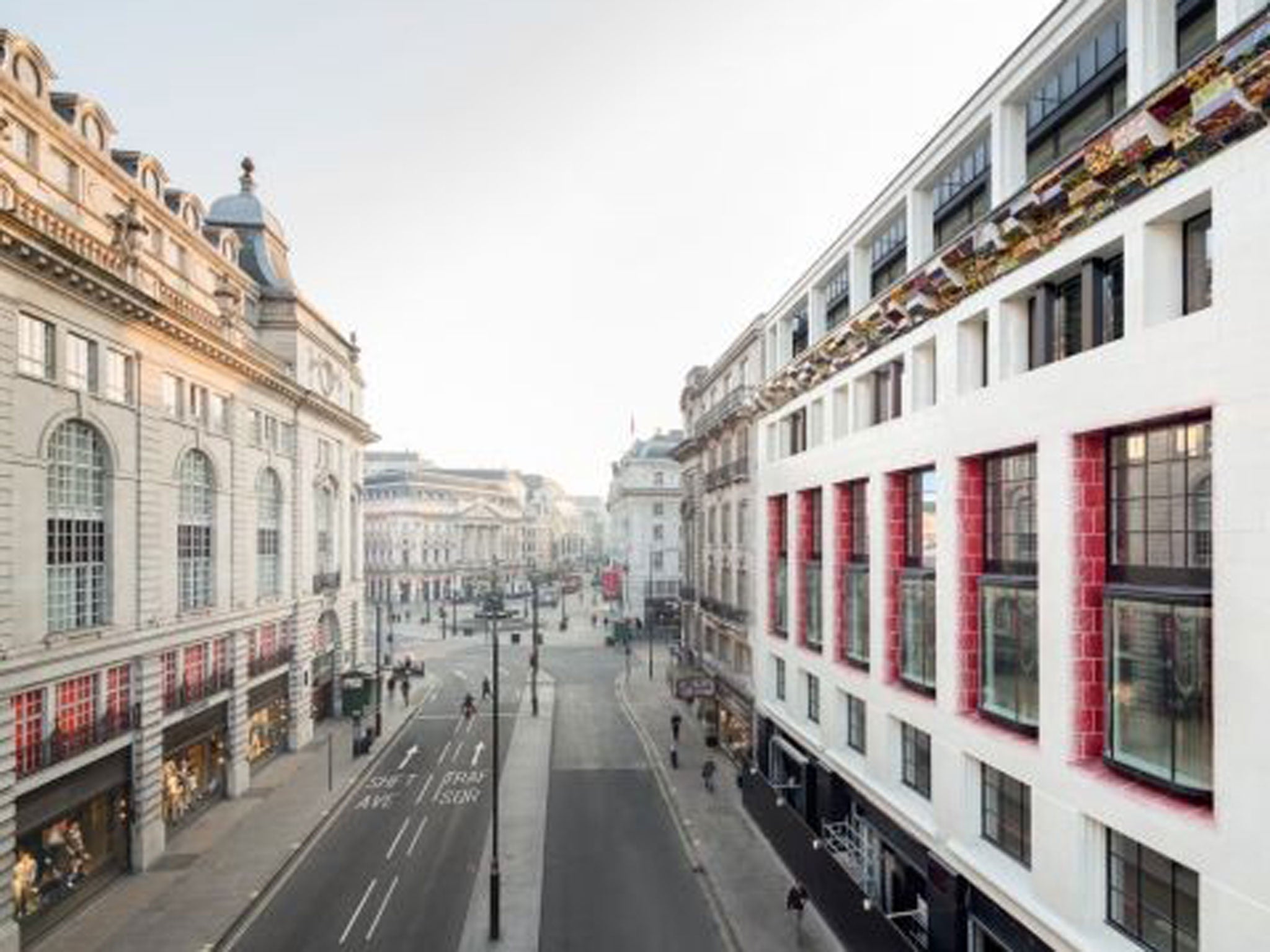A new prospect for Piccadilly: St James's Gateway building is London's newest startling building

Eric Parry is a highly cultured member of the establishment. Cambridge education, member of the Royal Academy, and regarded as one of Britain's finest architects. Why, then, do the double-storey windows in his revamped building in London's Piccadilly appear to be spattered with blood? And, in a designated Conservation Area, why are the colours and syncopations of Richard Deacon's cornice wilder than Rio Carnival?
The facade of the St James's Gateway building is the most startling big building in London since the repellent faux-gothic blancmange off Fenchurch Street known as both Minster, and Munster, Court. Equally challenging, in different ways, are No 1 Poultry, designed by Sir James Stirling in the early 1990s, Tony Fretton's Red House in Chelsea, with its glinting, ox-blood-red French limestone facade, and the mesh-bandaged yellow elevations of Newington Court student housing, Islington – architecture as triage.
Some will see the St James's Gateway building as architectural grand guignol; others will proclaim its ceramic faience surfaces as a vividly original craftwork.
It's true that Parry can be sighted wearing a pair of Lobb shoes one day, and battered clogs and a rumpled duffel-coat the next. But that hardly explains the extraordinary trouble he's taken to simulate a mescaline vision 60m from Piccadilly Circus, with the blessing of Westminster Council and the Crown Estate.
“The cornice is inspired by the exuberance and activity of the nearby Piccadilly Circus and shows how true collaborations between architects and artists can enrich the experience of buildings for inhabitants of, and visitors to, London,” he says. The crimson spray around the windows is “sympathetic”.
Parry loves coloured ceramic facades, and the craft that produces them. He has also always been profoundly interested in art: one of the architect's favourite painters is Sean Scully, who tends to produce loose patterns of coloured squares. Another key interest lies in the stage-set designs of Adolphe Appia, the Swiss who effectively invented 3D performance spaces in the Edwardian era.
But what has happened in Piccadilly is not simply about an art-sensitive architect's polychromatic boldness. Eric Parry has helped Westminster Council to set an interesting, but rather tricky, precedent about the way some of London's street-scapes can be vertically resurfaced.
And a worrying possibility emerges. What if it catches on?
Join our commenting forum
Join thought-provoking conversations, follow other Independent readers and see their replies
Comments